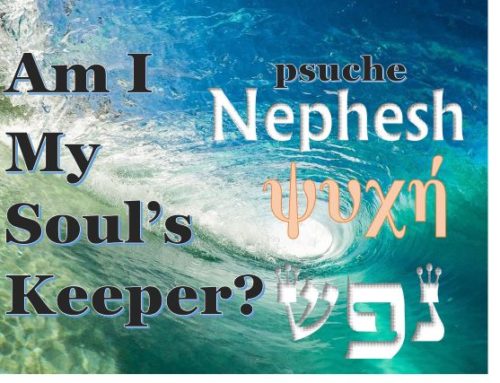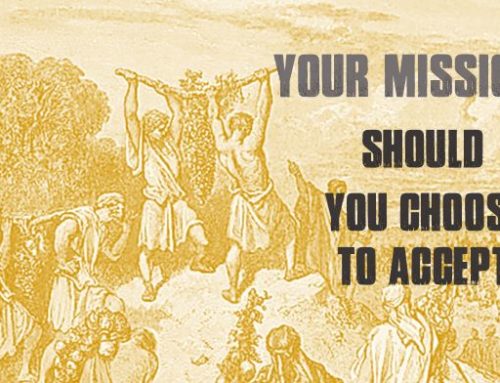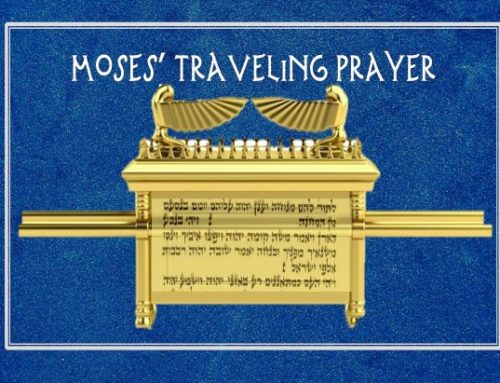Torah Portion Tetzaveh, Exodus 27.20-30.10, Haftarah, Ezekiel 43.10-27
“And you shall make holy garments for Aaron your brother, for glory and for honor.” Exodus 28.2
Our Torah portion, Tetsaveh, describes the priestly garments, a continuation of the workmanship for the Tabernacle. Almost every culture feels the need to be clothed. Once, I watched a video detailing “first contact” by anthropologist with an unreached tribe in brazil. To their surprise, the tribe quickly adopted clothes in their culture. The High Priest’s garments were for glory and honor. Their description returns us to Adam and Eve in the Garden. To be clothed in Hebrew la-bush, has a connotation of a remedy for shame, la – for, bush – shame. Other Hebrew words for clothing contain similar meaning. The priestly garments of glory and beauty were a return to the glory before Adam’s sin.
Between the instructions for creating the “continual lamp” (ner tamid), and the continual sacrifices, olah tamid, sixty verses describe the priestly garments. Commentaries note that they remind us of creation. Between the creation of light, and the sacrifice God made for man, Adam feebly attempted to clothe himself.
Holy Garments of Light
“And they were both naked, the man and his wife, and were not ashamed.” Gen. 2.25 NKJV
Some Jewish traditions says that Adam and Eve were clothed with light before the fall. This (אור/Ohr) light, spelled with an aleph was replaced by a garment of skin (עור)/Or), spelled with the letter ayin.[1] What we do know is that though Adam and Eve were naked, they knew no shame. Sin awakened in them the need to cover or hide themselves.
The Hebrew word “beged” (בגד)“garment” also means a “violation of faith”. [2] Adam, covered his transgression with leaves. God covered him with the skin of a sacrifice. Aaron’s holy garments, called bigdei kodesh, bear the iniquity away, allowing man to intimately fellowship with his Creator in the Holy of Holies as Adam had in the Garden before the fall.
”So it shall be on Aaron’s forehead, that Aaron may bear the iniquity of the holy things which the children of Israel hallow in all their holy gifts; and it shall always be on his forehead, that they may be accepted before the Lord.” Exodus 28.38. NKJV
What about that tribe who quickly insisted on being clothed, despite the anthropologist’s objections? What can be done to cover our sense of shame before the Creator of the universe? How do we obtain the holy garments of glory and honor to cover a soul? The High Priest’s garments which allowed him to enter the Holy of Holies reveal our journey back to the Creator. Made of eight pieces, there were four undergarments – the linen pants, the seamless robe which Messiah also wore, the sash and the turban. The four outer layers – the ephod, breastplate, robe, and crown were garments of “glory and honor” woven with gold and royal purple, adorned with precious stones. These speak to our journey from shame to the presence of Adonai.
I. The Ephod
“And you shall put the two stones on the shoulders of the ephod as memorial stones for the sons of Israel. So Aaron shall bear their names before the Lord on his two shoulders as a memorial.” Exodus 28.12 NKJV
This was an outer garment over the robe of blue, similar to an apron, over the priest’s front and back. On each shoulder strap of the Ephod was an onyx stone containing the names of six of the twelve tribes, serving as a memorial (zicaron) for good before the Lord. The High Priest represented not only himself, but all Israel before Adonai. He bore the memorial of their names on his shoulders.
Isaiah said Messiah would bear the government on His shoulders. Messiah also bears salvation on His shoulders. Yeshua told the parable of a man who had ninety-nine sheep safely sheltered, yet one sheep was lost. The Shepherd is Yeshua. He seeks the one lost sheep, and when He finds him, He places that lost one on His shoulders and rejoices. But not only does he memorialize His beloved on His shoulders, He places them over His heart.
II. The Breastplate
”And you shall put in the breastplate of judgment the Urim and the Thummim, and they shall be over Aaron’s heart when he goes in before the Lord. So Aaron shall bear the judgment of the children of Israel over his heart before the Lord continually.” Exodus 28.30 NKJV
The breastplate, known as the choshen, was woven, with twelve precious stones bearing the names of Israel similar to the onyx stones in the Ephod. It is significant that these names are worn over the heart. Many have noted that though each stone was different, all were precious stones. You are also precious in your individuality.
The purpose of the breastplate was for a right judgement. Though the High Priest bore Israel over his heart, he did not make decisions based on his heart. He judged them according to the mysterious Urim and Thummim, lights of perfection. Though Messiah carries us as a memorial on His heart, he judges us according to the light. The Urim of the breastplate were lights. Yeshua has given us also a “breastplate of righteousness” to make right judgement. We are not to led by our feelings, and the dictates of our heart, but the perfect light of righteousness. Yeshua, will say to many on that day, “I never knew you: depart from me, ye that work iniquity.” (Mat. 7.23) The breastplate of righteousness given to us covers our heart so that we are not led astray by our heart!
III. The Robe
“And thou shalt make the robe of the ephod all of blue.” Exodus 28.31 NKJV
The robe was worn under the ephod, and made of a royal blue, woven as a single piece that that it not be torn. To the hem of the robe were fastened pomegranates of blue, purple and scarlet, alternating between golden bells. The bells were necessary as the priest entered and left the Holy presence that he might not die.
In a great sense the High Priest was an anointed king. This color spoke of his royalty. The men of Israel were also to wear a fringe of this same color, because Israel is a Royal Priesthood before the nations. Yeshua, the Son of Man, is described as having such a robe in the book of Revelation.
“And in the midst of the seven lampstands One like the Son of Man, clothed with a garment down to the feet and girded about the chest with a golden band.” Rev. 1.13 NKJV
Finally, we come to the last of the unique garments of glory and honor, the crown of the High Priest.
IV. The Crown
“So it shall be on Aaron’s forehead, that Aaron may bear the iniquity of the holy things which the children of Israel hallow in all their holy gifts; and it shall always be on his forehead, that they may be accepted before the Lord.” Exodus 28.38 NKJV
The crown or diadem of the High Priest was a plate of beaten gold some two fingers wide, stretching from temple to temple was attached by a blue cord to the turban over the forehead. Upon it was engraved in Hebrew Kadosh L’Adonai – “Holy to the Lord”.
The High Priest functioned as a type of king, bearing the responsibility of the nation on his shoulders, and thus it was fitting that he should also have a crown that set him apart.
Messiah’s Crown
The Priest who bears the iniquity away from the people, does so with a crown affixed, Holy to the Lord. It was the chief of four garments of glory and honor. But this was merely a symbol of the King of Kings, and great High Priest Messiah who has been crowned with Glory and Honor, who bears the iniquity of all who put their trust in Him. The Psalmist said.
“What is man that You are mindful of him, And the son of man that You visit him? For You have made him a little lower than the angels, And You have crowned him with glory and honor.” Psalm 8. 4-5 NKJV
These words were a prophecy of Messiah. As the writer of Hebrews has said,
“We see Jesus, who was made a little lower than the angels, for the suffering of death crowned with glory and honor, that He, by the grace of God, might taste death for everyone.” Hebrews 2.9 NKJV
Roman soldiers stripped Yeshua of his seamless robe and hanged Him shamed. They fashioned a crown of thorns to mock His kingship. Yet, a dying man looked to Yeshua and said, “Remember me when you come into your kingdom”. How could he know that when the veil of Messiah’s body was rent, Yeshua would enter the most holy place of heaven, robed in the priestly garment and sash, crowned in glory, bearing the dying thief’s and my iniquity.
Conclusion
There is something within each of us that desires to cover our nakedness. From the first man in the garden to the native of Brazil. It is likely not a coincidence that the word for clothing and the word for betrayel and concealing are the same. We are looking for a solution to hide our betrayal (beged). If only there was a garment for the soul. In fact, that has been the whole purpose of the “bigdei kodesh” Holy Garments. Messiah was clothed in the garments of glory and honor, in order that we might be clothed in robes of righteousness. A robe of salvation is the promise to all who overcome, and place call on the name of the Lord.
“He who overcomes shall be clothed in white garments, and I will not blot out his name from the Book of Life; but I will confess his name before My Father and before His angels.” Revelation 3.5 NKJV
Know that you are represented in Messiah before the throne. Messiah bears you on both his shoulders and over His heart. And because He has been clothed with glory and honor, you can be clothed with glory and honor also!
Shavuah Tov From Zion
[1] Ari D. Kahn, “Clothing of Light,” in Echoes of Eden: Sefer Bereishit (Jerusalem, Israel: Gefen, 2011), 29.
[2]“Klein Dictionary, בגד ᴵ 1.” Sefaria. Accessed February 21, 2021. https://www.sefaria.org.il/Klein_Dictionary%2C_%D7%91%D7%92%D7%93_%E1%B4%B5.1?lang=bi&with=all&lang2=en. בגד to betray, deceive, to act treacherously.
— Qal – בָּגַד he acted treacherously.
— Niph. – נִבְגַד he was betrayed. [Prob. denominated from בֶּגֶד ᴵ (= clothing, garment) and lit. meaning ‘to cover with, or as with, a garment’, ‘to conceal’.”





